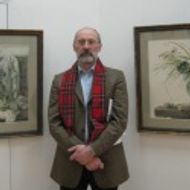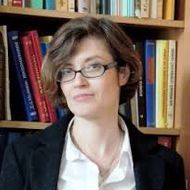Influence of the Spatial Relations and Natural Factors on Socio-Economic Practices, Functioning of Infrastructure, and Heritage in History of Russia
Objectives of the research:
The project focuses on the material component of spatial relations in the history of Russia in the long term perspective. This study analyzes the practices of interaction between institutions and communities, on the one hand, and natural material objects, taking into account the peculiarities of their spatial positioning, on the other. The project aims to continue the development of a methodology for studying dynamic and hybrid combinations of human and natural influences reflected in various spatial configurations using specific historical examples and to test the application of this methodology on various cases from the history of Russia and the USSR.
This study will:
- Analyze the relationship between space, time and materiality in the form of resources, products, infrastructures, exhibition facilities and heritage sites in a long historical perspective.
- Describe how these material objects influenced the production of specific experiences in the creation, use and perception of space in different historical periods.
The historical subjects selected for research include, but are not limited to:
- The role of nature and space on the formation of prices for goods during the monastic colonization of the European North of Russia.
- Interactions of coastal and sea space with port infrastructures on commercial practices in the ports of the Russian Empire in the 18th century.
- The Emergence of the Phenomenon of Urban Pedestrian Traffic: Spatial Organization, Movement Practices and Flow Regulation (based on the history of St. Petersburg/Petrograd/Leningrad in the late 19th and early 20th centuries)
- History of urban communal infrastructures and sanitary problems of the second half of the 19th - early 20th centuries. as part of the history of urban space.
- Study of the connection between space and technology in the first attempts to develop coal mining in Svalbard during the First World War.
- Comparative study of forest images in the space of the northwestern and eastern regions of the USSR in the late 1940s-1980s.
- Development of the space of the north of Siberia during the urbanization of the 1950s - 70s: sociological conceptualization of the space of the Far North.
- Spatial aspects of the representation of natural and industrial objects and heritage elements.
The following results were obtained as a result of this project:
- The study of the spatial factor showed that space influenced the practices of moving people, goods and ideas, but was also transformable under the influence of the actors involved in the processes under study. Mobility, in this case, implies not only movement as such, but also includes the so-called practices of "immobility". For example, it has been shown that the choice of strategies of small producers who sold salt to the monastery locally and did not consider other locations for trading is a prime example of a strategy based on the idea of immobility.
- Based on the analysis of the parish and expense ledgers of the Spaso-Prilutsky Monastery, it was concluded that spatial factors were important in assessing the informativeness of the sources. Changes in prices for various groups of goods fluctuate not only depending on the place and time of the recorded transaction, but also on the so-called "mobile strategies" of the participants. Prices also reflect the desire to achieve a balance in the market value of the same goods, taking into account the practices of its mobility, which is an important circumstance for all participants in the transaction.
- The study of the features of imaginative mobility, which represents a crucial part of the social imaginary, also allowed us to analyze the behaviour of Leningrad pedestrians. Their mobility was used in the planning of managerial activities of state bodies and became the basis for forecasting the activities of museums. The imagined mobility of the past participates in the formation of visitors' identity, appeals to their emotions, and helps shape their idea of "traditional" mobility.
- Studying the history of pedestrian traffic in Leningrad on the basis of the chosen methodology allowed us to see the pedestrian as an abstraction, a representative of a controlled psycho type. It was shown that the Soviet authorities, sought to balance the complex behaviour of the members of an emerging society, with appropriate practices referring to the idea of scientific management. The task of the state appears to be the ordering of space through the control of the movement of people.
- A detailed examination of the practices of organizing port space has revealed a "stereoscopic" effect: the space appears to be "multilayered" and at the same time used by different actors within the framework of contradictory strategies. In particular, it was shown that state officials did not simply act within their job descriptions, but constructed their plans, just as trade participants created informal, strong communities built on the opportunity to provide contact and interaction. In other words, space was filled with complex meanings, becoming part of legitimate or illegitimate activities.
- A case study of urban communal infrastructures showed that most northern cities had a need for clean drinking water at the turn of the nineteenth and twentieth centuries. The ability to meet this need was determined by the city's departmental affiliation, its economy, and the actions of the city government.
- Spatial relations during the creation of technological projects and the organization of coal mining in Spitsbergen during the First World War were decisive in terms of the uneven location of natural resources, technological and logistical difficulties of access to them, transportation, geopolitical complexities in the process of economic activity in Spitsbergen.
- The study of Arctic cities allowed us to propose a different reading of space -- an arena for modernizing activity and about the "imagined normalization" of a poorly adapted space. An analysis of the links between the migration of Soviet citizens and the planning of state measures to transform circumpolar regions at the expense of architectural achievements showed mobility as a kind of social contract. Citizens made informal commitments to move to critical, from the state's point of view, points of space and the state by default had to take measures to "normalize" the space.
- An in-depth analysis of a wide range of sources made it possible to reconstruct the history of projects to create museum exhibitions of full-scale models of railway technology in Leningrad in the 1970s and 1990s. The conclusion was made that in the late Soviet society (co)there were many approaches to the construction of the value of railway technology as a model of historical, cultural and industrial heritage. It was shown that the activities of railway enthusiasts and individual museum communities to create such exhibitions in the late Soviet Union was an important indicator that society had an urgent need for the construction of museum spaces as repositories of material relics of the past.
- The findings allow for a deeper reflection and more informed decision-making in the planning of interactions between space, society and nature. The historical experience gained in the course of the project can be used in further research as well as when planning teaching courses and methodological seminars.
Supervisors

Лаборатория экологической и технологической истории: Ведущий научный сотрудник
Центр исторических исследований: Главный научный сотрудник
Participants of the project
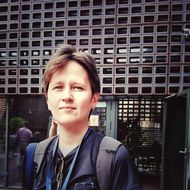
Лаборатория экологической и технологической истории: Научный сотрудник

Лаборатория экологической и технологической истории: Стажер-исследователь
Лаборатория экологической и технологической истории: Старший научный сотрудник
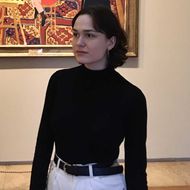
Лаборатория экологической и технологической истории: Стажер-исследователь
Лаборатория экологической и технологической истории: Старший научный сотрудник
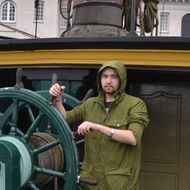
Лаборатория экологической и технологической истории: Младший научный сотрудник
Лаборатория экологической и технологической истории: Младший научный сотрудник

Лаборатория экологической и технологической истории: Научный сотрудник

Лаборатория экологической и технологической истории: Старший научный сотрудник

Лаборатория экологической и технологической истории: Лаборант

Лаборатория экологической и технологической истории: Стажер-исследователь

Лаборатория экологической и технологической истории: Стажер-исследователь
Have you spotted a typo?
Highlight it, click Ctrl+Enter and send us a message. Thank you for your help!
To be used only for spelling or punctuation mistakes.
